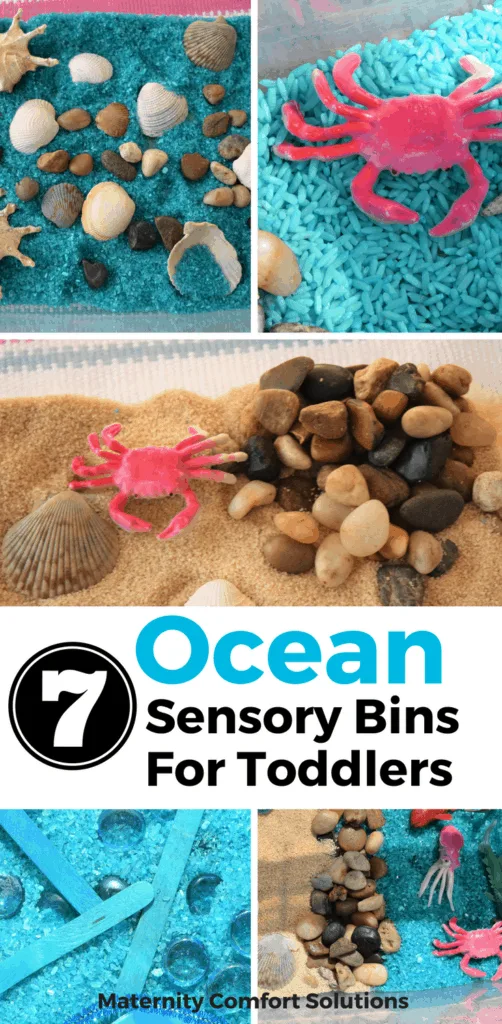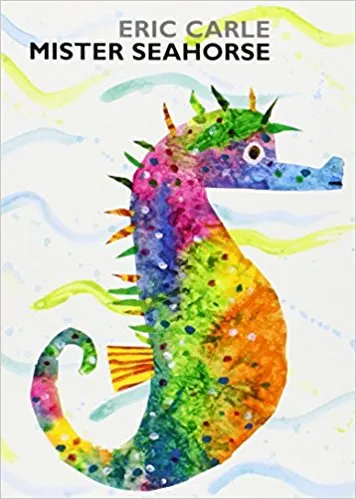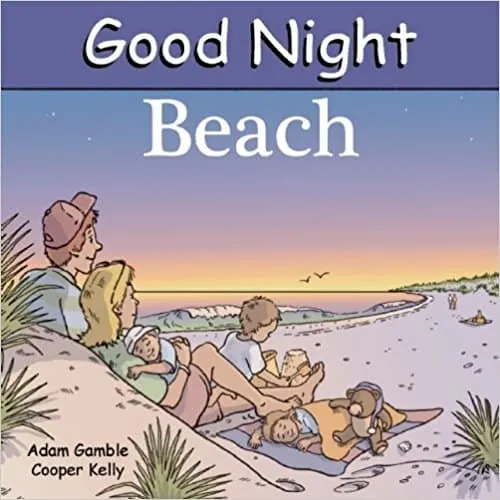Making ocean sensory bins is an easy and fun activity to do at home with your toddlers and preschoolers.
Having lots of opportunities for sensory play is important to a young child’s development.
The following sensory bins are designed to encourage exploration and open-ended play.
They are also easily made at home.
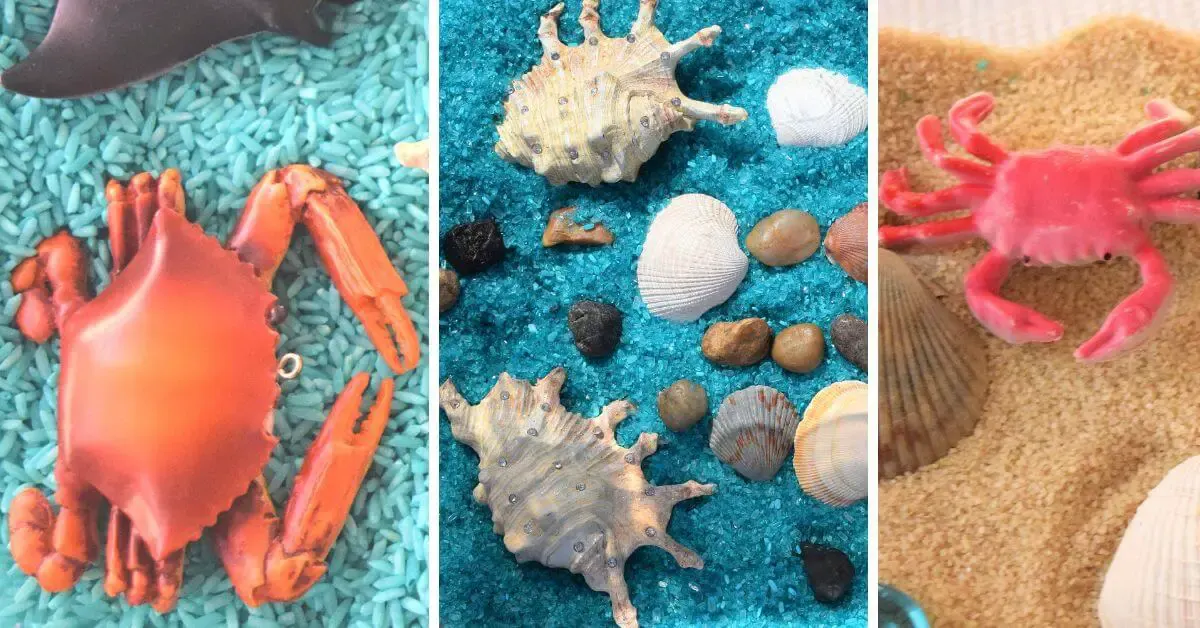
None of these ocean sensory bins ideas were expensive to make and none of them took more than 30 minutes from start to finish.
These are great to make and take on a beach vacation with your toddler and make an excellent after-beach activity!
One way to spark your child’s imagination is to read some books about the ocean before you give them the sensory bin.
A list of my favorite ocean books for toddlers and preschoolers is below:
Mister Seahorse – Eric Carle
Over in the Ocean In a Coral Reef – Marianne Berker
Good Night Beach – Adam Gamble and Cooper Kelly
Ocean: A visual encyclopedia – DK
7 Easy Ocean Sensory Bins For Toddlers:
1. Colored rice ocean sensory bin
You can find the recipe for coloring the rice here: 9 easy DIY Sensory Bins For Toddlers. It is super easy to make and we have been using the rice for over a month and it is still perfect.
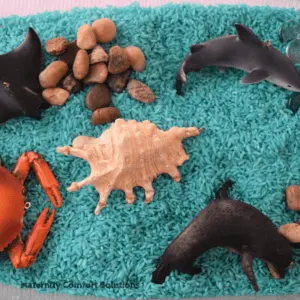
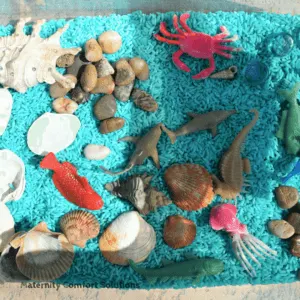
2. Ocean sensory bin made with colored sand
You can find the recipe for the colored sand here.
This recipe makes the prettiest sand. The sand is not sticky at all.
The pic below is the sand in an ocean shell sensory bin I made.
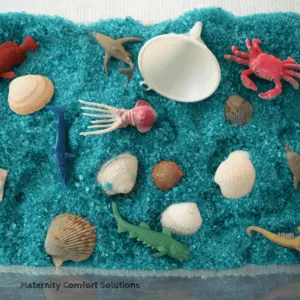
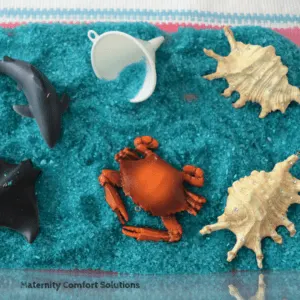
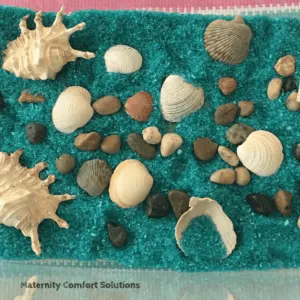
Using the same sand, I made a “Blue” ocean sensory bin with all blue items.
All of the items I added are from the Dollar Store.
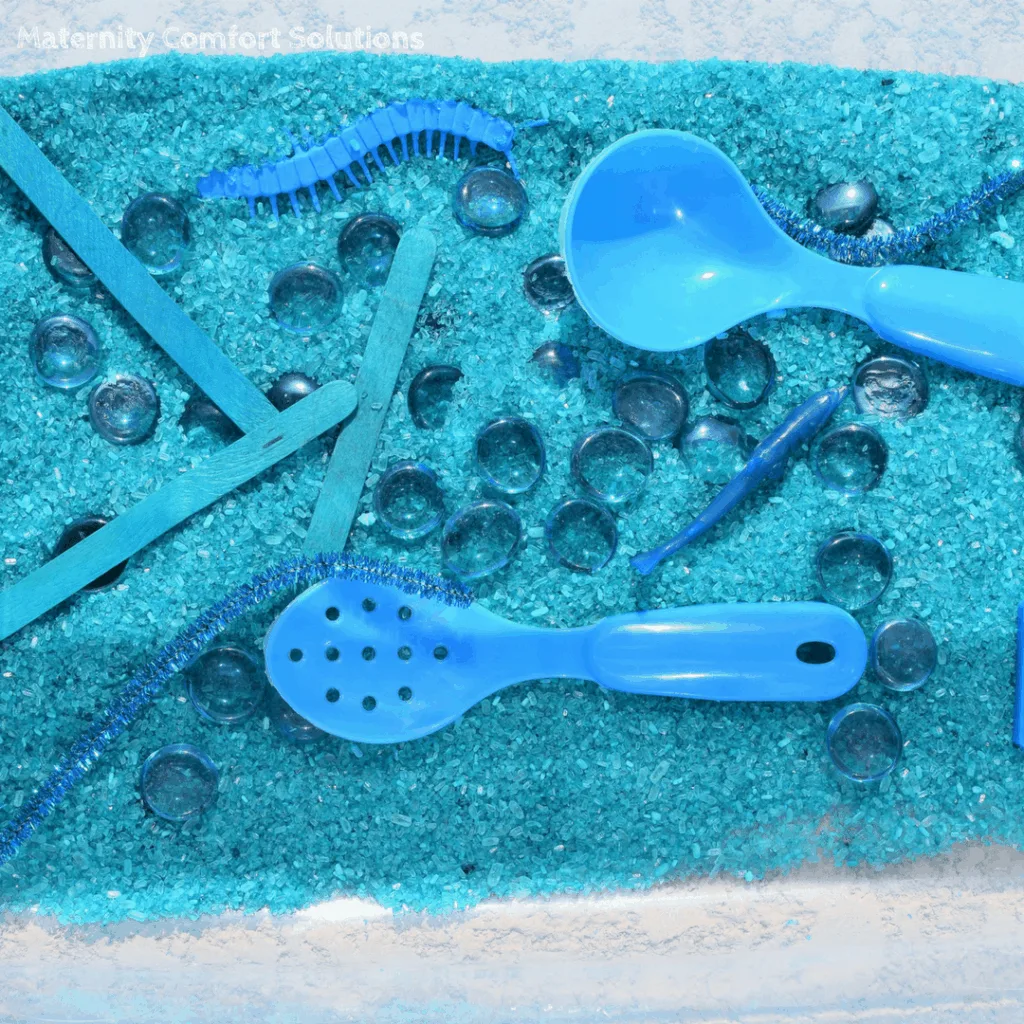

3. Sand and water ocean sensory bin
The recipe for the blue-colored sand is above.
The tan sand is from the Dollar Store.
I made a barrier with the rocks to separate the sand from the “ocean”.
It will get mixed when the kids play but, the colors are still really pretty even when the sand is mixed.
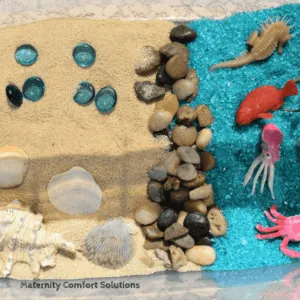
4. Ocean sensory bins made with craft sand and blue stones from the dollar store
This is a great option if you don’t have the time to make any of the homemade sensory bin fillers.
The sand is a $1 bag of craft sand, a $1 bag of rocks, and a $1 bag of colored stones, all from the Dollar Store.
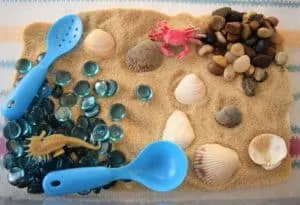
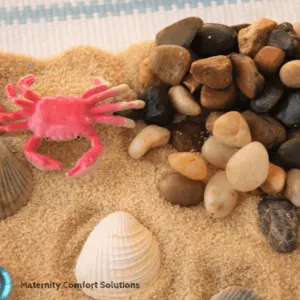
https://www.youtube.com/watch?v=szHaMTjoSAQ
5. Colored pasta ocean sensory bins.
You can find the recipe for the colored pasta here.
It is very simple to make. I added shells and sea life creatures I picked up at the dollar store.
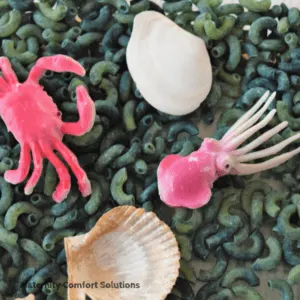
6. Ocean sensory bins made with homemade sand (2 ingredients only!)
The best part about this sand is that it is moldable! I
added some shells and sea life creatures from the dollar store to the bin.

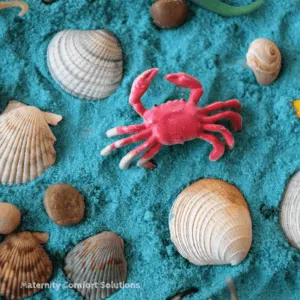
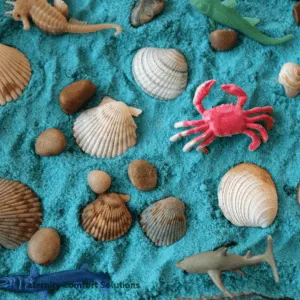
7. Finally, last but certainly not least, a colored beans ocean sensory bin.
I used pinto beans for this recipe.
The color came a vibrant blue.
You can find the recipe for coloring the beans here.
They can be a life-saver on a rainy day when the littles can’t get outside to burn off some energy.
Need more sensory bin ideas? Check out: 9 Easy Diy Sensory Bins For Toddlerand 5 Summer Bug Sensory Bins for Toddlers.
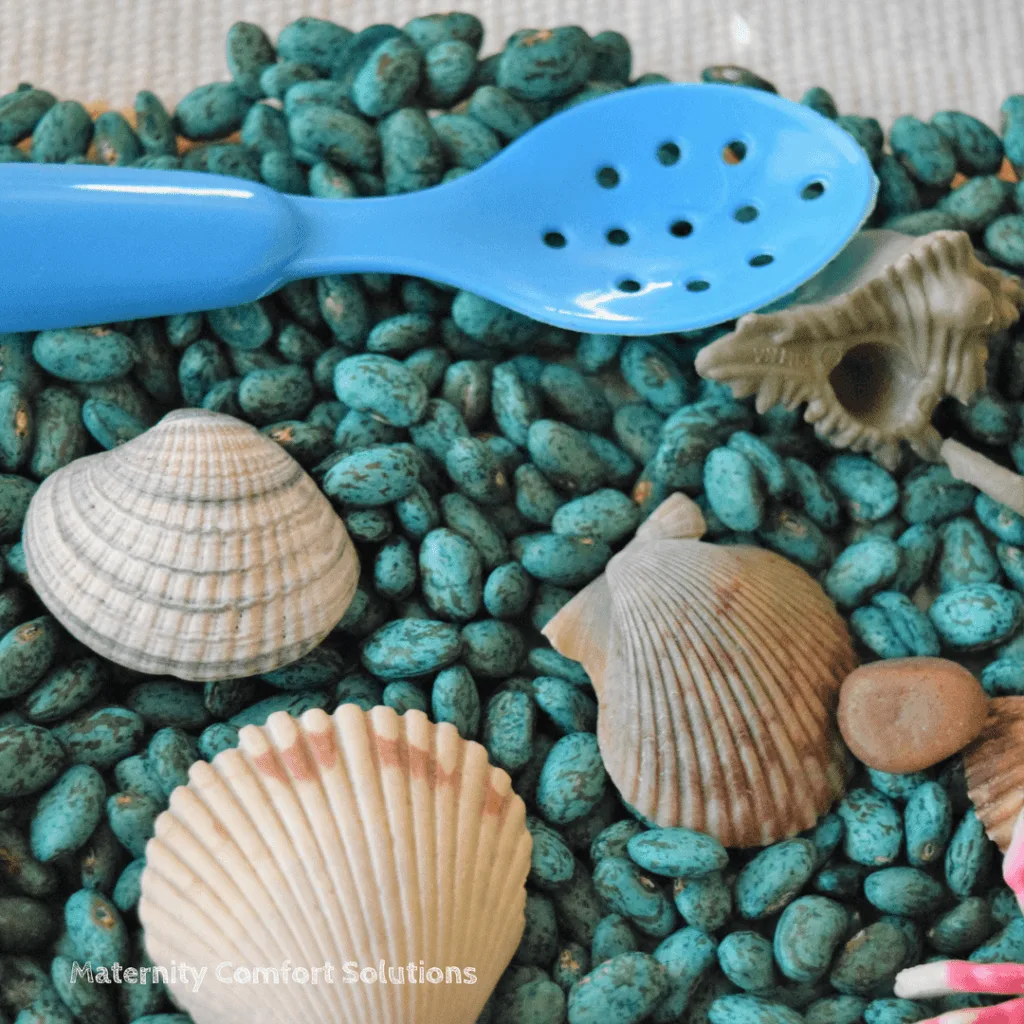
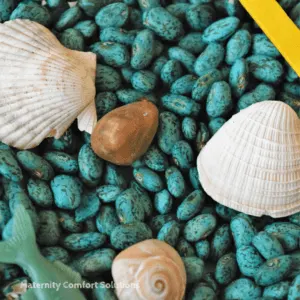
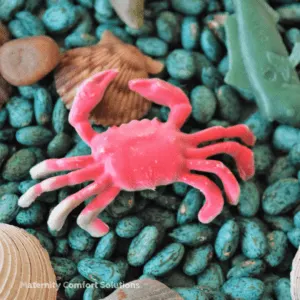
Extend the play with our FREE printable Sea Life coloring book!
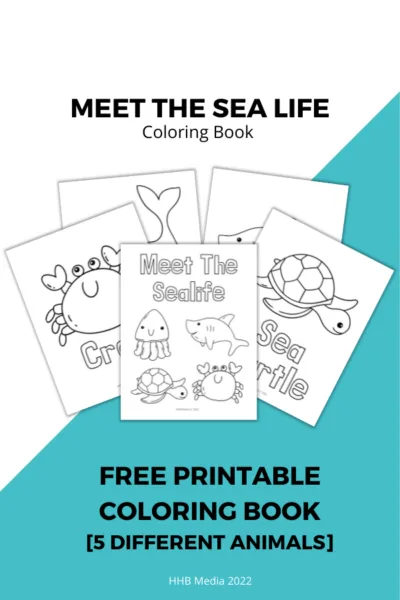 Free Printable Sea Life Coloring Book
Free Printable Sea Life Coloring Book
What do you put in an ocean sensory bin?
Popular items to add to an ocean sensory bin can include shells, sea life creatures, water beads or gel beads, kinetic sand, and colored beans.
You can also add homemade sand (2 ingredients only!), craft foam shapes, and other craft supplies for a more creative experience.
For additional fun and engagement, you could include themed books about the ocean and water, magnifying glasses or binoculars, play dough, and cookie cutters shaped like sea creatures.
Finally, to keep the kids entertained for hours on end you could add a few beach toys like buckets, shovels, and sand molds.
How to make a water sensory bin?
Making a water sensory bin is surprisingly easy!
First, select your container – any non-toxic bowl or tub will do.
Then fill it with enough water to submerge the items you want to add (e.g., shells and sea creatures).
You can also add food coloring, glitter, and other materials for added visual appeal.
For a more interactive experience, including items like scoops, strainers, and measuring cups.
You can also add floating toys such as boats or rubber ducks.
What is sensory play?
Sensory play involves activities that use the five senses.
These activities use the sense of touch, smell, sight, taste, and hearing.
Sensory play is vital to a child’s brain development.
Research suggests pretending play offers young children the opportunity to develop empathy and learn to regulate their behavior.
Toddlers learn about their environment and bodies through their senses.
Sensory play assists children with developing fine and gross motor skills and encourages problem-solving ability.
Sensory activities encourage open-ended play.
Therefore the child is free to explore and create without a set outcome or any expectation.
You can’t go wrong with providing many opportunities for sensory play.
Sensory bin fillers do not have to be expensive. They are very easy and inexpensive to make at home.
Most of the items I added to the bins came from the dollar store or were items we already owned.
None of these bins took longer than 30 minutes in total to make.
You can speed up the drying time on the pasta and rice by baking them at 250 degrees for 10 minutes.
Once they cool, you are all set.
The possibilities and combinations of sensory play and sensory bin ideas are almost endless.

